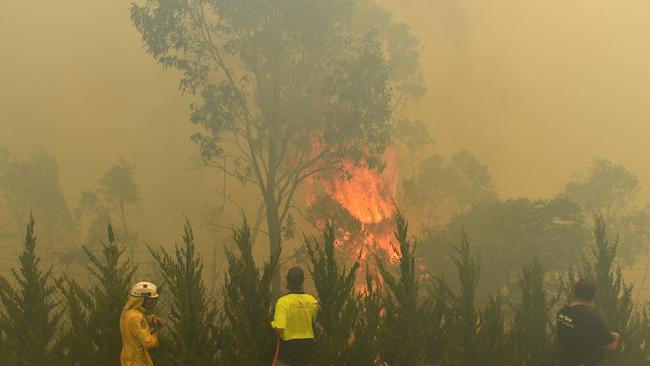Bushfires inquiry: Smoke from summer wildfires killed 450
Toxic smoke killed hundreds and affected the health of 80 per cent of the population, with a total health cost of $2bn.

More than 450 people died as a result of the toxic smoke that blanketed much of the nation during the Black Summer fires of 2019-20 – more than four times the number of Australians that have died from COVID-19.
Associate Professor Fay Johnston, from the University of Tasmania’s Menzies Institute for Medical Research, revealed the toll on the second day of a landmark inquiry into the horror fires that directly killed 33 people and destroyed more than 3000 homes.
She said 80 per cent of Australians were affected by smoke, causing huge loss of life and $2bn in additional health costs.
“The vast majority of the impacts were in the eastern states, but we found that there were 445 excess deaths attributable to smoke from these fires,” Associate Professor Johnston said.
She said there were 3340 hospital admissions for heart and lung related problems and 1373 additional emergency department presentations for asthma.
The national death toll from the coronavirus currently stands at 102.
Professor Johnston said the cost estimate was about 10 times higher than the fluctuations researchers would normally see from year to year when studying bushfire seasons and was a “major departure” from anything her team had seen in the previous 20 years.
She said the estimated health impacts did not include the longer-term effects on individuals who would have experienced considerable stress or had their medical treatment plans disrupted.
University of Melbourne health expert Lisa Gibbs told the inquiry those that had lived through a bushfire were at greater risk of mental health problems, particularly if they had felt their lives were at risk, they knew someone who died or had lost their home.
Professor Gibbs said the recovery of those affected would still be in its “early days” with bushfire trauma usually taking up to five years to work through.
"It's incredibly difficult to be living in sheds and temporary accommodation … but it's also incredibly difficult to make really important decisions when you've got 'bushfire brain', as people often refer to it," she said. "The trauma fog is not a time when it's easy or sensible to be making serious decisions."
Professor Gibbs said trauma could also have long-term effects on students’ performance at school.
Associate Professor Johnston called for greater national co-operation when it came to providing medical advice during bushfire seasons as it varies by a “surprising amount” between each of the states and territories.
“I think what we can do right now is get better at how we share information about smoke to members of the community,” she said.
The Red Cross’ director of natural disasters, Noel Clement, told the inquiry the organisation had received $226m in donations over the bushfires, of which $86m had been distributed.
He warned there had been “very significant cyber activity” in relation to his charity’s bushfire grant program, with at least 900 applications coming from bots trying to claim funds.
Mr Clement said it was harder to identify suspicious claims because there was no single verified database of those affected.
Counsel assisting Kess Dovey told the commission new Insurance Council of Australia data showed $2.2 billion in claims had been made, while the Australian Small Business and Family Enterprise Ombudsman, Kate Carnell estimated that 200,000 of the 3.2 million small business across the nation had been affected by the disaster.
National Bushfire Recovery Agency data shows the inferno burned through 8.28 million hectares of land.




To join the conversation, please log in. Don't have an account? Register
Join the conversation, you are commenting as Logout